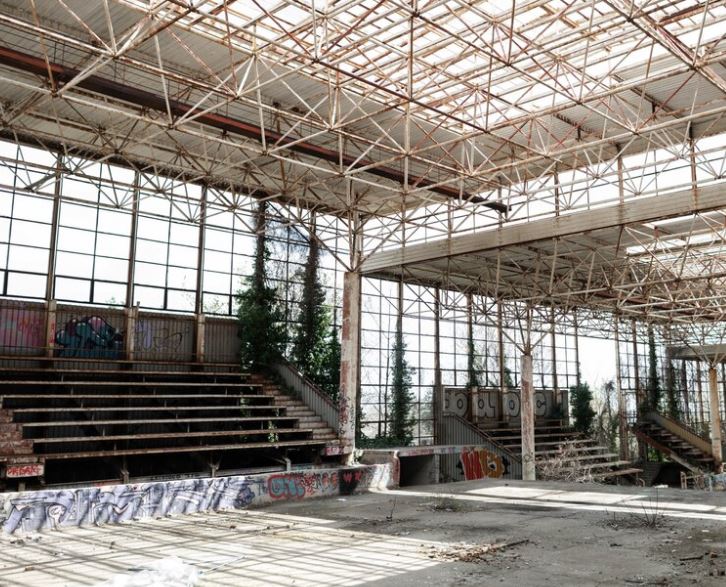Standing motionless is no longer an option in the world of modern football. Arsenal’s Emirates Stadium, once a marvel of early 21st-century design, is undergoing a strikingly ambitious reinvention as rivals build stunning new venues or expand theirs to the tune of billions. It was once Europe’s envy when it opened in 2006. However, in recent years, Emirates started to feel more like a memory than a significant event as West Ham, Tottenham, and even Liverpool exceeded its capacity and connectivity.
The board of Arsenal, under the direction of co-chairman Josh Kroenke, has made significant efforts to alter that during the last 12 months. They are not just responding to market trends by starting a massive renovation project that is estimated to cost between £500 million and £650 million. They are actively creating a modern structure. Something that is intentionally fan-first. Something “built for tomorrow,” as they put it.
Emirates Stadium Renovation – Key Information (Insertable WordPress Table)
| Category | Details |
|---|---|
| Stadium Name | Emirates Stadium |
| Club | Arsenal FC |
| Current Capacity | 60,704 |
| Proposed Capacity | Up to 80,000 |
| Renovation Budget | Estimated between £500M – £650M |
| Completion Target | By Summer 2028 |
| Confirmed Upgrades | 5G mobile mast, beer supply system, third-tier expansion |
| Architectural Partner | Populous (original and redesign firm) |
| Major Influences | Bernabéu Stadium renovation (Real Madrid) |
| Strategic Choice | Declined Euro 2028 hosting for concert and event flexibility |
| Transport Challenge | Holloway Road Tube Station requires capacity upgrades |
| Reference Link | Wikipedia – Emirates Stadium |
A Modern Improvement for a Tradition-Based Club
Arsenal’s renovation may seem like a catch-up in the context of intensifying stadium wars, where Man United is planning a 10,000-seat mega-ground. But the Gunners are displaying their hand by emphasizing smarter rather than just bigger. This isn’t about using steel and glass to outmuscle rivals. It involves fusing technological intelligence with emotional heritage.
Arsenal is investigating concepts that defy the conventional expansion narrative through strategic partnerships with Populous, the company that created its original design. By increasing capacity to 80,000, a potential third tier would put them on par with Europe’s elite. However, the stadium’s transformation into a multipurpose hub is noteworthy. 5G connectivity that works remarkably well is already being tested. Speed-pouring “beer pythons” are part of a £2 million update to the beer supply that is delighting fans.
Even though these improvements may not seem like much in comparison to a brand-new stadium, taken as a whole, they significantly enhance the fan experience, which is much needed, especially in the digital age when seamless streaming and immediate updates are standard.
Why It Makes Complete Sense for Arsenal to Have Refused Euro 2028
Many were taken aback in recent months when Arsenal declined to host Euro 2028 matches. Beneath that audacious action, however, is a surprisingly calculated choice. They are converting the Emirates into a hybrid venue that can accommodate concerts, expos, esports competitions, and more by keeping their stadium open during the summer. Though less ostentatious than hosting UEFA events, this adaptability is highly commercially astute.
Part of the inspiration for this move came from the Santiago Bernabéu. Real Madrid’s extensive renovation produced more than just a new, shiny arena; it also created a multifunctional, digitally first venue that could host Ed Sheeran and El Clasico back-to-back. The leadership of Arsenal is obviously aware of the similarity and the possibilities.
Managing Reality, Increasing Expectations, and Red Tape
Despite its loftiness, Arsenal’s project has real obstacles. Transport for London and Islington Council must approve any significant structural changes first. Before it can accommodate tens of thousands more people, Holloway Road Station, which is already overcrowded on matchdays, will probably require significant investment. However, according to club sources, negotiations are already in progress.
“We’re not just painting walls,” confirmed Emirates venue director Tom McCann at a recent fan forum. The way this building serves people is being rethought. Even though it is straightforward, that statement sums up the renovation perfectly. Grandeur for the sake of grandeur is not the point here. It all comes down to function—building a stadium that can react, change, and serve precisely.
Identity and Innovation Are Important in Football
Arsenal’s strategy is especially novel since they don’t aim for the same prestige indicators that other teams display. They’re creating a more responsive future instead of a more ostentatious version of the past. Every stage is incredibly fan-centric, from setting up a new data mast to updating kitchen amenities and enhancing beverage delivery.
Quiet confidence over blaring bravado is perhaps the most Arsenal-like quality of all. Arsenal aims to reinvent matchday without sacrificing the poetry of Saturday afternoons in North London, much as Wenger transformed diet, training, and tactics in the Premier League.
The Last Whistle Idea
Stadiums all over the world turned into echo chambers during the pandemic, demonstrating how much we yearn for communal experiences. The Emirates Stadium makeover by Arsenal is more than just an architectural achievement; it’s an emotional one as well. It’s an oath to current and potential fans to make sure the roar of the crowd is heard more clearly, louder, and by more voices than in the past.
By accepting this ambitious reconstruction, Arsenal is not only staying competitive with the European powerhouses, but also guaranteeing that Emirates will continue to be a hub of culture, business, and community in addition to being a stronghold of football.


